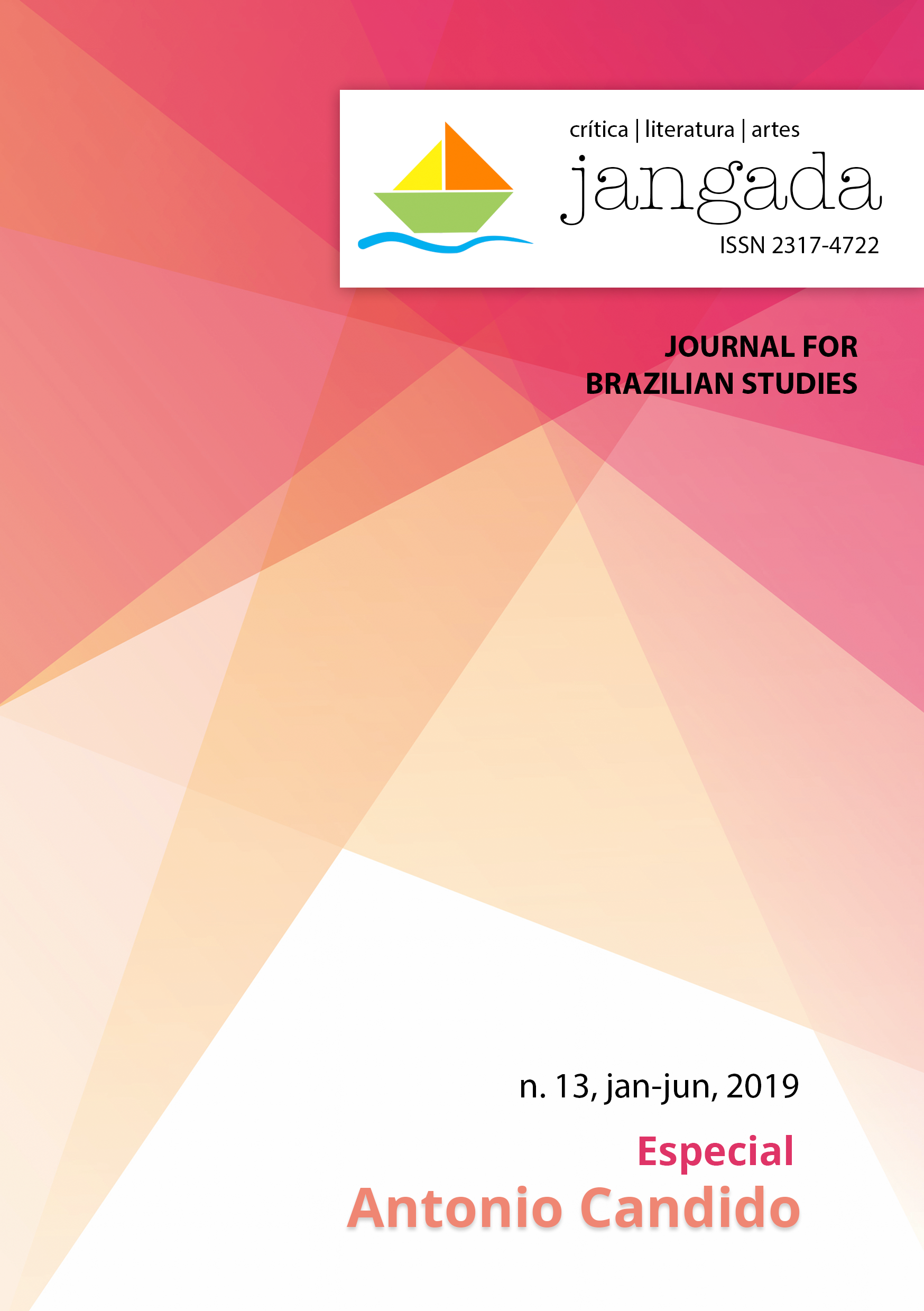A teoria de Antonio Candido e a formação da literatura australiana
DOI:
https://doi.org/10.35921/jangada.v1i13.218Keywords:
Antonio Candido, Formação da literatura, Literatura australianaAbstract
ABSTRACT: In his theory of literary formation, Antonio Candido claims that, for a literature to exist “as a system”, five factors in “dynamic interaction” are required. These factors are divided into two groups. The first group includes two “internal factors”: a common language and themes to express the anxieties and the identity of a community. The three psychological/social factors are authors who are conscious of their roles, a public for these authors and a literary language materialized into works of literature. In the context of this article, the internal factors are the Australian variant of English and the rural themes related to the Australian outback and its inhabitants. Henry Lawson is presented as an author committed to the questions of identity in Australia by means of his fictional and poetic work, which conferred him immense popularity with his reading public and a special place in the Australian canon. The article attempts to analyse the particularities of the interactions between the formative elements of Australian literature, locating the moment of its formation in the second half of the 19th century, especially in the 1890s.
KEYWORDS: Antonio Candido, literary formation, Australian literature.
Downloads
References
ANDERSON, Benedict. Comunidades imaginadas. São Paulo: Companhia das Letras, 2009.
CANDIDO, Antonio. Formação da literatura brasileira: Momentos decisivos. Rio de Janeiro: Ouro sobre Azul, 2006.
______. Literatura e Sociedade. São Paulo: Publifolha, 2000.
CARTER, David; WHITLOCK, Gillian. Institutions of Australian literature. In: WALTER, James (ed.). Australian studies: a survey. Melbourne: Oxford University Press, 1989.
CLARKE, Marcus. Preface to Adam Lindsay Gordon’s poems. In: BOEHMER, Elleke (org.). Empire Writing: An Anthology of Colonial Literature, 1870-1918. Oxford: Oxford University Press, 1998.
DAVEY, Gwenda Beed; SEAL, Graham. A guide to Australian folklore. Sydney: Kangaroo Press, 2003.
FIELD, Barron (ed.). Geographical memoirs on New South Wales by various hands. London: John Murray, 1825.
GOODALL, Peter. High culture, popular culture: the long debate. Sydney: Allen & Unwin, 1995.
GREEN, H. M. A history of Australian literature. v. 1. Sydney: Angus and Robertson, 1968.
HESELTINE, Harry. Saint Henry – our apostle of mateship. In: RODERICK, Colin (ed.). Henry Lawson criticism: 1894-1971. Sydney: Angus and Robertson, 1972.
______. The uncertain self: essays in Australian literature and criticism. Melbourne: Oxford University Press, 1986.
LAWSON, Henry. A camp-fire yarn: Complete works 1885-1900. Sydney: Lansdowne Press, 1984a.
______. A fantasy of man: Complete works 1901-1922. Sydney: Lansdowne Press, 1984b.
______. Autobiographical and other writings: 1887-1922. Sydney: Angus and Robertson, 1972.
______. Letters: 1890-1922. Sydney: Angus & Robertson, 1970.
LEE, Christopher. City bushman: Henry Lawson and the Australian imagination. Fremantle: Curtin, 2004.
PHILLIPS, A. A. Henry Lawson. New York: Twayne Publishers, 1970.
WARD, Russel. The Australian legend. Melbourne: Oxford University Press, 1966.
WRIGHT, Judith. Henry Lawson. Melbourne: Oxford University Press, 1967.








